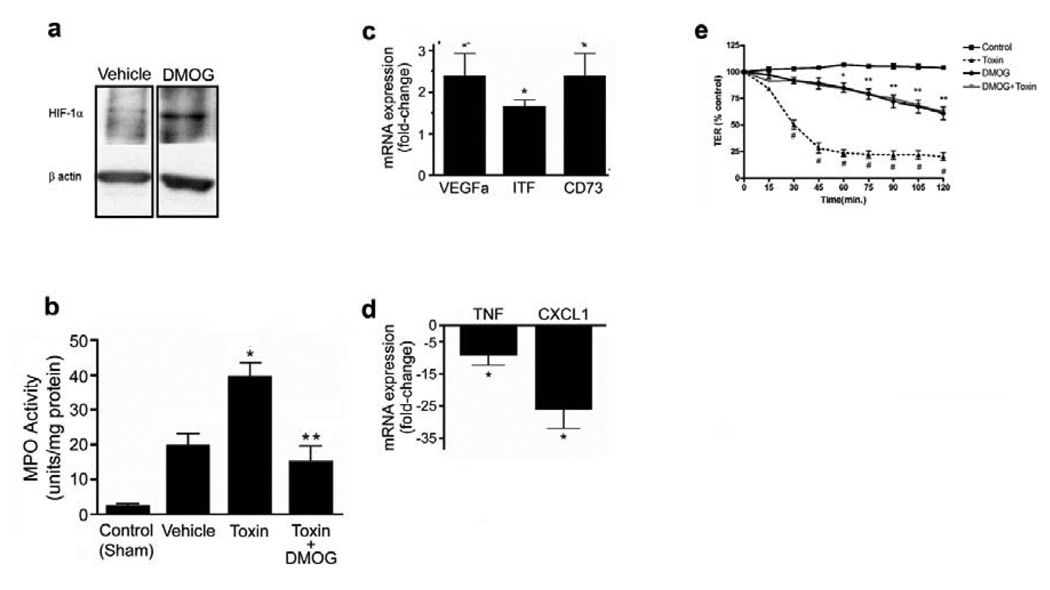Figure 8.
Mice treated with dimethyloxallyl glycine (DMOG, 8mg/day for 2d prior to surgery) display increased levels of HIF-1α (a) in protein extracts isolated from full-thickness ileal segments as compared to mice injected with PBS vehicle and reduced (b) intestinal inflammation as assessed with MPO levels. Control indicates levels measured in animals not undergoing surgery, *p<0.05 compared to control and vehicle; **p<0.05 compared to C.difficile toxin treatment, n=6–8. Pretreatment with DMOG prior to C.difficile toxin exposure is associated with elevation of factors associated with intestinal barrier function and protection (c) and reduced levels of inflammatory mediators (d) as measured with qPCR. Data are fold-change from C.difficile toxin treatment where 1 is equal to the expression in the toxin group. *p < 0.05 compared to toxin, n=3. (e) DMOG treatment protects against C.difficile toxin-induced breakdown of epithelial barrier function. Caco-2 cells were exposed to vehicle (control), C.difficile toxin (60µg/mL), DMOG (500µM) with C.difficile toxin (60µg/mL) or DMOG (500µM) alone. Time (in minutes) indicates the time elapsed following addition of toxin to monolayer, data are expressed as a percentage of the control TER, *p<0.05 compared to control and toxin; **p<0.005 compared to toxin; #p<0.005 compared to control, n=4.

